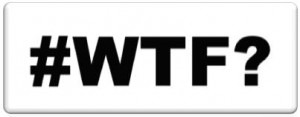On a recent MLB broadcast, sports play-by-play legend Vin Scully was reading a liner card about the Dodgers’ Twitter poll where fans were asked to tweet/vote on one of two hashtags.
And Scully wondered out loud about what the heck is a hashtag anyway. You can watch the video below.
>EMAIL RECIPIENTS: CLICK HERE TO WATCH VIN SCULLY VIDEO<
Deadspin, the popular sports alternative website to the more mainstream ESPN.com, cut him some slack: “Vin Scully doesn’t need this shit. Probably half the people watching Dodgers games are watching specifically for Scully, anyway. They are already entertained and you bunch of suits at Fox have Vin talking about hashtags and tweeters and all this nonsense.”
I beg to differ.
Scully is a treasure, as are a number of radio broadcast legends at stations all over the country. But just because they’ve been around since dirt doesn’t mean they cannot and should not keep up with technology because it’s the way the audience communicates.
 Our Techsurvey8 last year showed that of the 12 formats covered, sports fans are the most likely to be on Twitter. And of those who are, a whopping half say they’re following their favorite sports radio station and/or its personalities.
Our Techsurvey8 last year showed that of the 12 formats covered, sports fans are the most likely to be on Twitter. And of those who are, a whopping half say they’re following their favorite sports radio station and/or its personalities.
If Scully figured out the designated hitter rule, Sabermetrics, and instant replays for controversial home run calls, surely someone in the Dodgers organization or at Fox could teach him a few basic fundamentals about Twitter.
I’m sorry, but there’s nothing quaint about broadcasters who don’t get it. That effectively stopped with Andy Rooney who might have opined, “What’s all this talk about hashtags? I mean, I eat hash and I’ve played tag, but I just don’t understand why every TV show and sporting event is talking about a hashtag.” Give me a break.
Charming, quaint, or simply out of touch?
The fact is, social media, second screens, on-demand programming, Twitter specifically, and other innovations are transforming broadcasting, and engaging fans in ways they never could participate before. To retain and grow their interest in modern times, networks, programs, and personalities are going to have to adjust, rather than be bemused by all this new-fangled technology.
Back when The Artist came out, we wrote a post about how that film foreshadowed technological change in media. The hero of the film fought the advancement of talk taking over the silent film industry. But the movie production executive played by John Goodman made the adjustment, noting “The public is never wrong.”
Right or wrong, consumers – including sports fans – are moving and changing. The onus is on broadcasters to not just adapt with the times, but to lead those changes and to use them for innovation and creating a better, more engaging user experience.
I love baseball tradition and gems like Scully as much as the next fan. But for our medium and personalities to survive and thrive in the digital world, they’ve got to get with the program.
- What To Do If Your Radio Station Goes Through A Midlife Crisis - April 25, 2025
- A 2020 Lesson?It Could All Be Gone In A Flash - April 24, 2025
- How AI Can Give Radio Personalities More…PERSONALITY - April 23, 2025




If you asked say, the top 20 decision makers in radio to explain hashtags, I wonder how many could do any better than Vin Scully…
Bob, as usual, a cutting, to the point question. Our Techsurvey9 – which we’ll present in just a couple weeks – shows nothing but growth for Twitter, with jumps in spoken word formats – the bread and butter of many broadcast companies. A strong knowledge of social media – and how consumers are integrating digital platforms, screens, and outlets into their lives is as essential as an understanding of EBITDA. I’ll bet ESPN would make the case that they’re related. Thanks for the comment.
I liked your blog today. So I shared it on our Social Network which reaches over 50 sites! Twitter and Sports..who would of thunk it?
Hard to believe, isn’t it? Thanks, Dave, for sharing and reiterating the value and reach of Twitter.